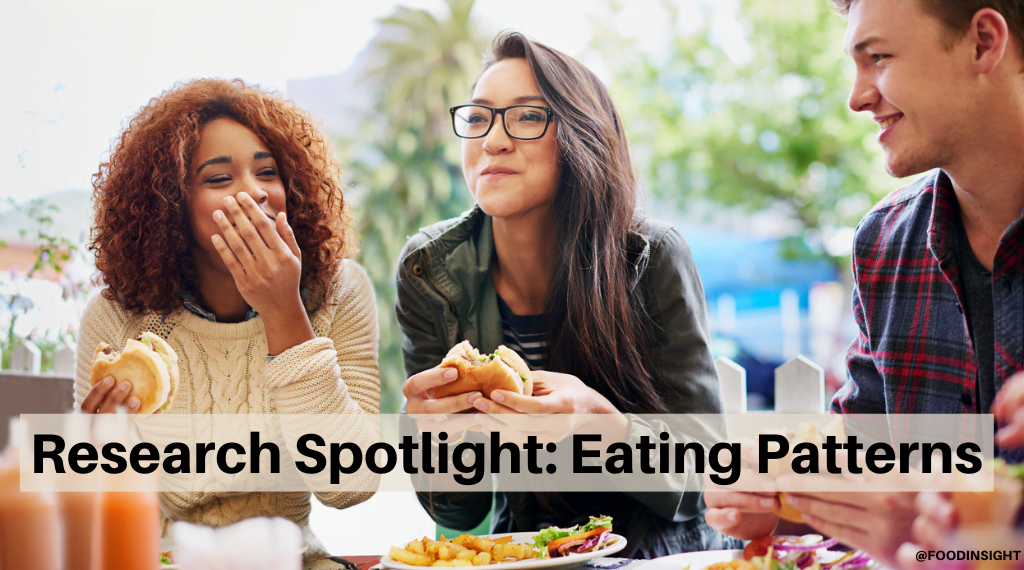The 2022 Food and Health Survey marks the 17th consecutive year the International Food Information Council (IFIC) has surveyed Americans to understand their perceptions, beliefs, and behaviors surrounding food and food-purchasing decisions. This year’s survey continues an examination of issues related to personal health, nutrition, eating patterns, food production, and food safety. In this article, we’re taking a closer look at the findings related to food behaviors—including snacking, mindful eating, and specific diets and eating patterns.
SNACKING
In this year’s survey, 73% of consumers report snacking at least once a day, an increase from the 58% who said the same in 2021. The top reasons for snacking remain consistent with previous results: Of those who snack at some point during the week (96%), 34% say it is because they are hungry or thirsty, and one in four (25%) say snacks are a treat for them. This year, the number of people saying they snack because they need energy or because it’s a habit rose compared with 2021 (22% vs. 17% and 21% vs. 17% in 2021, respectively). Men, Millennials, and Gen Z are more likely to eat meals and snacks during the late evening and late night when compared with women and older generations. Additionally, the types of snacks consumed vary by time of day, with fruit reported as the most popular morning snack (followed by dairy products and nutrition bars). In contrast, in the evening and late-night hours, people most commonly gravitate toward savory and salty snacks, candy, and chocolate or other treats, as well as cookies, cake, or ice cream.
This year’s survey also assessed stress levels and found an interesting relationship between stress and snacking. Over half of consumers (56%) reported feeling at least somewhat stressed in the last six months, and those who felt “very” stressed were more likely to report snacking three or more times a day than those who were “somewhat” stressed (29% vs. 10%, respectively).
DIETS AND EATING PATTERNS
In 2022, 52% of Food and Health Survey participants reported following a specific diet or eating pattern, a sharp uptick from 39% in 2021. Of those who followed an eating pattern or diet, the most popular choices were clean eating (16%), mindful eating (14%), and calorie-counting (13%).
Overall, more consumers in younger age brackets (those ages 18–49) are following specific diets and eating patterns in 2022 (74%) than in 2021 (52%). More parents with kids under 18 also reported following a diet or eating pattern in 2022 (70%) versus 2021 (53%). Motivations for adopting a diet or eating pattern remain stable as in previous years, with wanting to protect long-term health and prevent future health conditions (35%) and wanting to lose weight (34%) as the top choices.
MINDFUL EATING
Mindful eating is a dietary practice that emphasizes intentionality and awareness while eating, with a goal to develop a more positive and constructive relationship with food. This year, “mindful eating” was added to the list of options consumers could choose from to answer the survey question, “Have you followed any specific eating pattern or diet at any time in the past year?” Mindful eating (14% had tried it over the past year) ranked second only to clean eating (16%) as the most popular diet or eating pattern.
Furthermore, one in five consumers (20%) who followed a specific diet or eating pattern did so to improve their relationship with food. For younger consumers in the 18–34 age bracket, two out of five of the top diets or eating patterns selected focus on improving one’s relationship with food.
In addition, those in the 18–34 age bracket, those who self-report being in excellent or very good health, parents with kids under 18, and those who have been very stressed in the last six months were more likely to say they followed a mindful eating pattern in the last year when compared with older age groups (50–64 and 65–80 years old), those who report being in fair or poor health, people without young children, and those who have not felt stressed in the last six months.
Despite the popularity of mindful eating, not everyone is on board. This year, fewer consumers reported planning out their food choices in advance, with 44% saying they do so always or often (versus 50% in 2021). Moreover, there was an increase in those who said they feel guilty about what they’ve eaten (with 21% always or often feeling guilty, versus 16% in 2021).
There’s a lot of data to sift through from the 2022 Food and Health Survey, and this article is just a deeper dive into one facet: eating patterns. While themes like snacking and mindful eating have continued to emerge, it’s clear that Americans of various ages have a variety of perspectives when it comes to nutrition and health. For more information about the 2022 Food and Health Survey and IFIC’s various consumer research efforts, please visit foodinsight.org.
This article includes contributions by Ali Webster, PhD, RD, and Marisa Paipongna.
